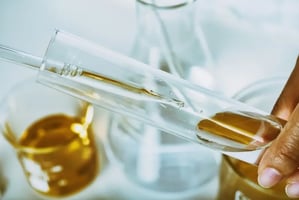Oak moss: extraction and olfactory notes
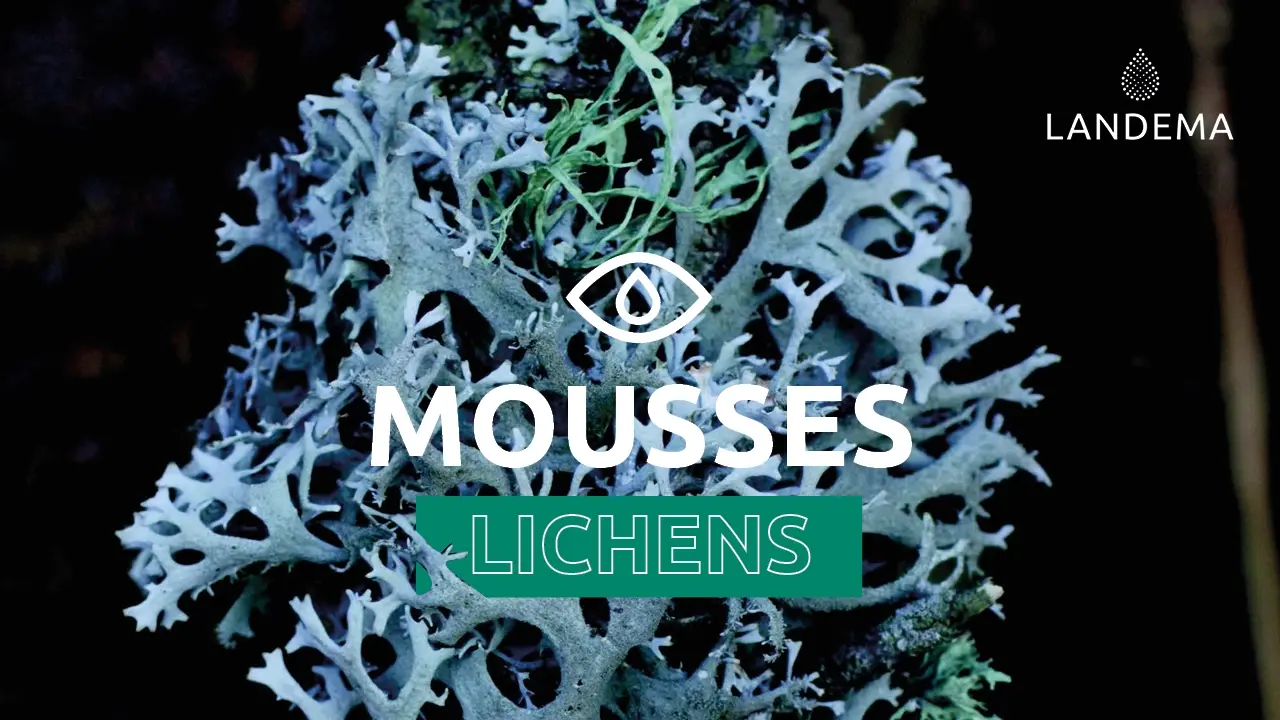
January 31, 2023
Les Mousses, from Macedonia to Lozère
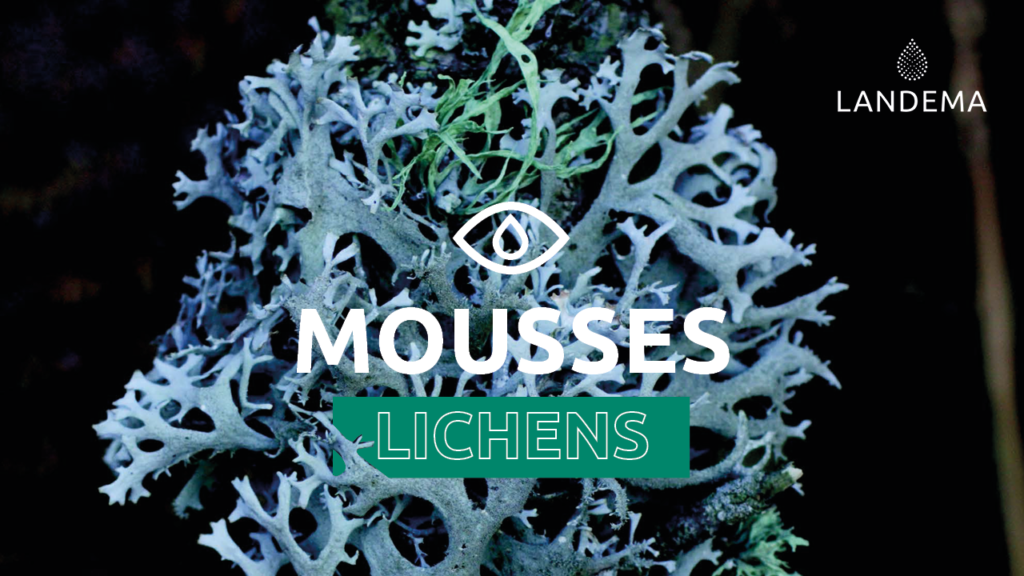
Mosses, essential for perfumery
If it's appropriate to talk about "mosses" with a perfumer, the botanist will prefer to talk about lichens. Extracts from these small, discreet plants make up the large family of mosses used in perfumery.
They have been extracted since the 15th century to perfume gloves and wardrobe interiors. But it's mainly with modern perfumery that moss has acquired its letters of nobility. It became a staple of "chypre bases" and an indispensable complement to masculine woody notes in particular.
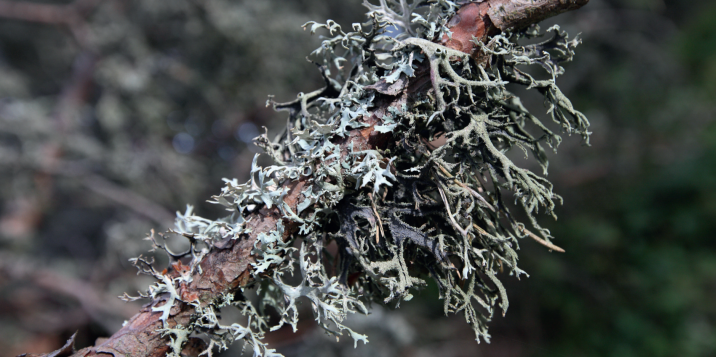
Landema - Groupe Biolandes
These lichens are widespread throughout the Mediterranean and the Balkans. In the 20th century, harvesting reached its peak with several thousand tons. Industrialists then developed a wide range of extracts, from concretes to resinoids, from absolutes to molecular distillations, suitable for a wide variety of applications.
Since 1988, Biolandes has been extracting moss at its plants, first in France, then in Morocco and Bulgaria. Thanks to the work of its researchers, Biolandes now manufactures a wide range of products, adapted to IFRA recommendations, yet pure and natural, to continue to offer perfumers these exceptional extracts.
You can read the article Iris pallida, fascinating and timeless, to find out more about another precious extract for perfumery offered by Biolandes and Landema, Iris butter.
Lichen for perfumery
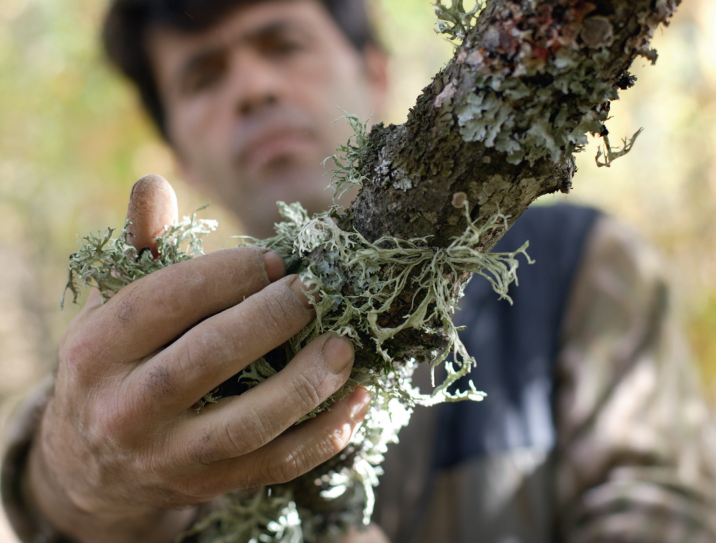
Landema - Groupe Biolandes
Lichen is a discreet combination of fungus and algae. These small plants cling to the bark of the trees that host them.
Two main lichens are used in perfumery:
- Evernia prunastri, known as "oak moss", harvested from the trunks of young oak trees in Macedonia.
- Evernia furfuracea, known as "tree moss", which clings to the branches of Scots pine trees and is harvested mainly on the high plateaux of Lozère.
Unspoiled mountain landscapes, Lozère, France...
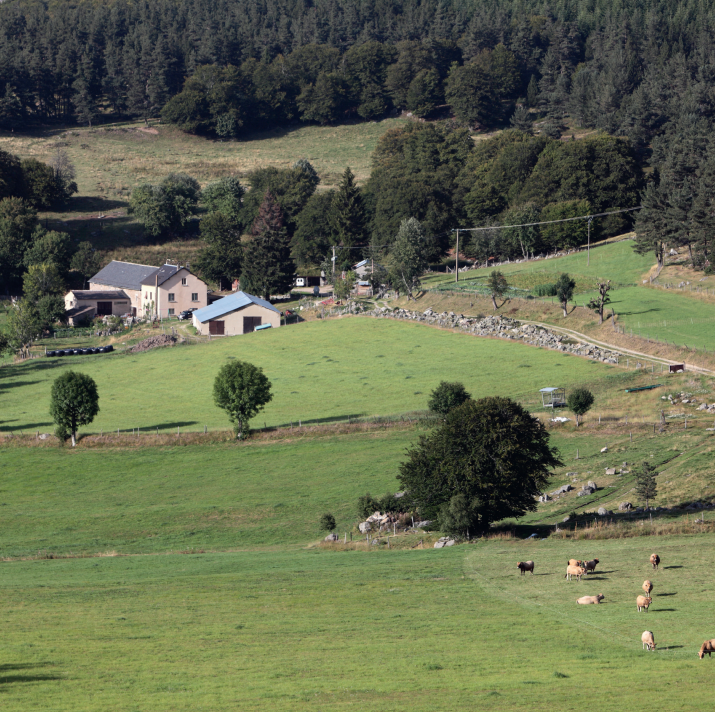
Landema - Groupe Biolandes
Crisp winters, wet springs, hot summers,altitude and, above all,pure air are the conditions required for lichen to thrive. These ideal conditions are found in Lozère, more precisely in Margeride, where the mountains covered with Scots pine forests reach heights of between 900 and 1400 m. This is the ideal place for tree moss.
...And in Macedonia
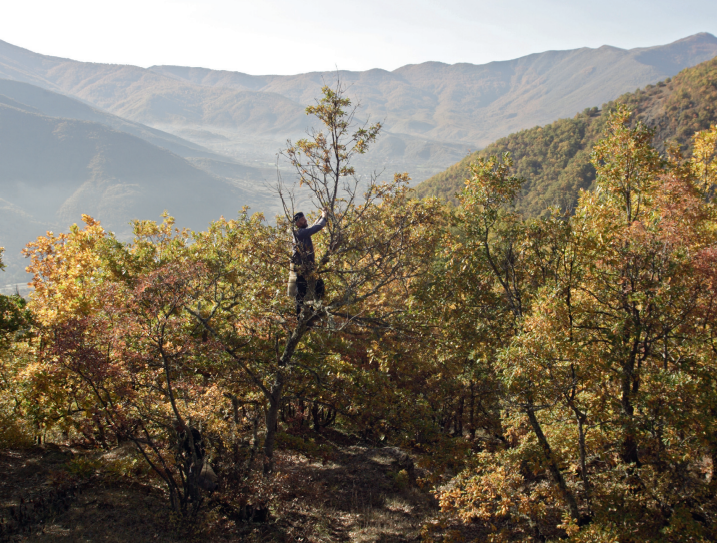
Landema - Groupe Biolandes
In western Macedonia, in the Samokov region, you'll find vast mountain ranges that expose their slopes to the humidity of the Adriatic and the sun of the Mediterranean. This is the ideal soil for growing oak trees, whose branches are covered with moss that until recently was known as "yougo moss".
Two different techniques: in Lozère, lichen and a little wood
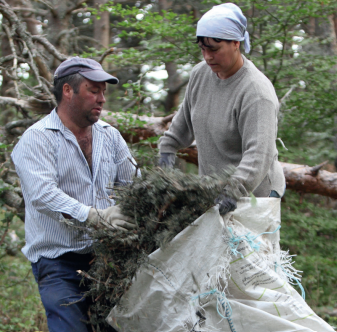
Landema - Groupe Biolandes
Our pickers José and Maria set to work at dawn to collect a large quantity of moss.
In Lozère, Evernia furfuracea clings to the dead branches of Scots pine trees. A true acrobat, José climbs the tree and, using his sickle, knocks off the lichen-covered branches. Maria gathers the treasure on the ground.
It takes the two of them a whole day's work to harvest 400 kg of this precious cargo of mixed lichens and twigs.
In Macedonia, lichen, nothing but lichen
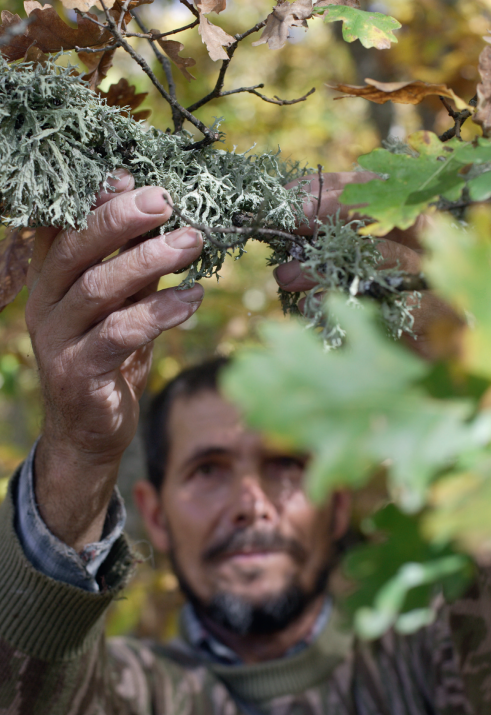
Landema - Groupe Biolandes
A few thousand kilometers from Lozère, in Macedonia, Dragan and his family are also hard at work gathering lichen. Their aim is the same: to collect as many mosses as possible.
Evernia prunastri thrives on the trunks and branches of oak trees. You have to climb the trees, scrape the trunks and peel back the branches to harvest the precious lichen. If, by misfortune, any wood or bark falls off, it must be sorted immediately to avoid altering the quality of the oak moss. At the end of the day, the best performers will take home 10 kg of sorted moss.
On the way to the collection center and artisanal pressing
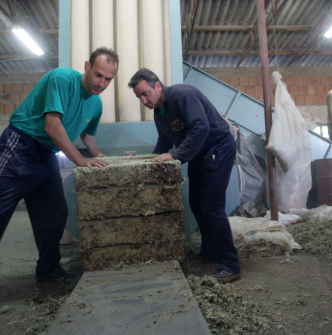
Landema - Groupe Biolandes
It's at this point that the collector enters the scene, an essential intermediary in the moss trade. He goes from village to village, from collection point to collection point, picking up the bags of several days' work with his truck. It's the collector who controls quality, pays and organizes the harvesting sites according to the orders from the extraction plants.
It's at the collection center that the lichen is baled, so that the volume transported to the extraction plants is reduced and optimized. In Macedonia, this is an additional but essential stage, still carried out in a very traditional way. The method is just as traditional in Lozère. The extraction plants are then ready to receive the lichens.
First stage of extraction: hydrolysis of the plant.
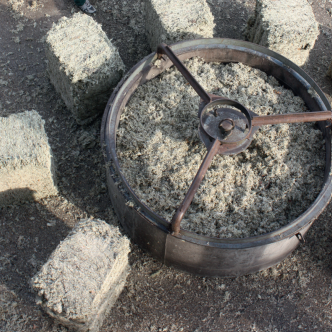
Landema - Groupe Biolandes
At the plant, the men unravel the bales of moss and feed them into the extractor. The moss is then wetted and heated with steam.Hydrolysis, an essential step,generates the powerful, tenacious odor molecules characteristic of moss extracts.
The extractors are filled with moist moss. Extraction can begin, lasting around ten hours, during which the lichens release their complex substances.
Over the years, a large number of derivatives have been developed from moss extract for specific uses. Among these are traditional absolutes, obtained by hot extraction, which release notes of damp undergrowth with smoky facets, and moss absolutes, produced by cold extraction, which have a fresh, marine scent.
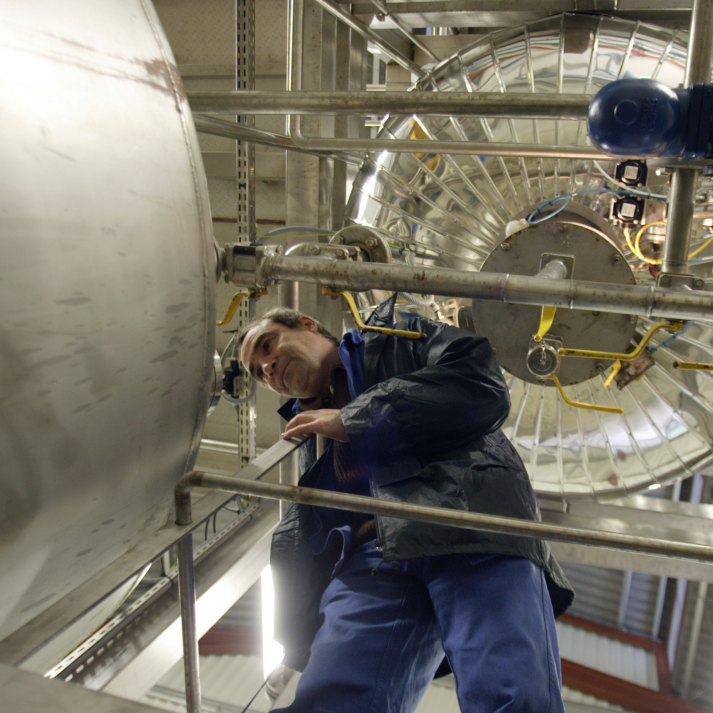
Landema - Groupe Biolandes
Please consult the Evernia prunastri moss oak absolute product sheet for further details, as well as technical and regulatory documents.
Thanks to the work of its research teams, Biolandes has developed innovative processes that reduce the concentration of allergenic molecules to trace levels without altering the olfactory properties of mosses. This range of pure, natural extracts complies with IFRA recommendations.
A subsidiary of the Biolandes group, Landema now makes the best natural extracts available online, direct from the manufacturer. Are you an independent perfume designer or manufacturer? You now have quick and easy access to the highest quality ingredients, even for small quantities.
Click here to find all our absolutes, and here to choose your essential oils.


